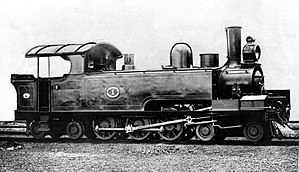 | |||||||||||||||||||
 | |||||||||||||||||||
| |||||||||||||||||||
| |||||||||||||||||||
| |||||||||||||||||||
Under the Whyte notation for the classification of locomotives, 4-6-4 represents the wheel arrangement of four leading wheels, six powered and coupled driving wheels and four trailing wheels. In France where the type was first used, it is known as the Baltic while it became known as the Hudson in most of North America.[1]
- ^ "Railway Technical Web Pages (Steam Locomotive Glossary)". Archived from the original on 2008-01-28. Retrieved 2008-02-08.